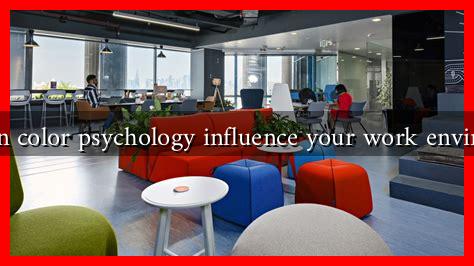-
Table of Contents
How Can Color Psychology Influence Your Work Environment?
Color psychology is a fascinating field that explores how colors affect human behavior, emotions, and perceptions. In the context of a work environment, the colors chosen for walls, furniture, and even branding can significantly influence productivity, creativity, and overall employee satisfaction. Understanding the psychological effects of color can help businesses create a more effective and harmonious workplace.
The Basics of Color Psychology
Color psychology is based on the idea that different colors evoke different feelings and reactions. Here are some common associations with various colors:
- Red: Often associated with energy, passion, and urgency. It can stimulate excitement but may also increase stress levels.
- Blue: Known for its calming effects, blue can enhance focus and productivity. It is often used in corporate settings to promote trust and reliability.
- Green: Symbolizing nature and tranquility, green can reduce anxiety and promote a sense of balance and harmony.
- Yellow: A color that evokes happiness and optimism, yellow can stimulate creativity but may also be overwhelming in large doses.
- Purple: Often associated with luxury and creativity, purple can inspire innovation and imagination.
Creating a Productive Work Environment
Choosing the right colors for your workspace can lead to increased productivity and employee satisfaction. Here are some strategies to consider:
- Use Blue for Focus: Incorporating shades of blue in meeting rooms or workstations can help employees concentrate and feel calm. A study by the University of British Columbia found that blue environments can enhance cognitive performance.
- Incorporate Green for Balance: Adding plants or green accents can create a more relaxed atmosphere. Research from the University of Exeter indicates that employees in green environments are 15% more productive.
- Accent with Yellow for Creativity: Use yellow sparingly in creative spaces to inspire innovation. A splash of yellow can stimulate the brain and encourage new ideas.
Case Studies: Successful Color Implementation
Several companies have successfully utilized color psychology to enhance their work environments:
- Google: Known for its vibrant office spaces, Google uses a variety of colors to stimulate creativity and collaboration. Their use of bright colors in common areas encourages social interaction and innovation.
- Airbnb: The company’s offices feature warm colors like orange and yellow, which promote a sense of community and friendliness, aligning with their brand values of belonging and connection.
- Facebook: The predominant blue color scheme reflects trust and reliability, which is essential for a social media platform that handles personal information.
Color Considerations for Remote Work
With the rise of remote work, color psychology can also be applied to home office setups. Here are some tips for creating a productive remote work environment:
- Choose Calming Colors: Opt for soft blues or greens to create a serene workspace that minimizes distractions.
- Incorporate Personal Touches: Use colors that resonate with you personally to create a space that feels comfortable and inspiring.
- Lighting Matters: Consider how natural light interacts with your chosen colors. Bright, well-lit spaces can enhance the effects of color.
Conclusion: The Power of Color in the Workplace
Color psychology plays a crucial role in shaping the work environment. By understanding the emotional and psychological effects of different colors, businesses can create spaces that enhance productivity, creativity, and employee well-being. Whether through the calming effects of blue, the energizing qualities of red, or the creativity inspired by yellow, the strategic use of color can lead to a more effective and harmonious workplace.
As you consider the colors in your work environment, remember that the right palette can not only influence individual performance but also foster a positive organizational culture. For more insights on color psychology and its applications, you can explore resources from the Color Psychology Association.


